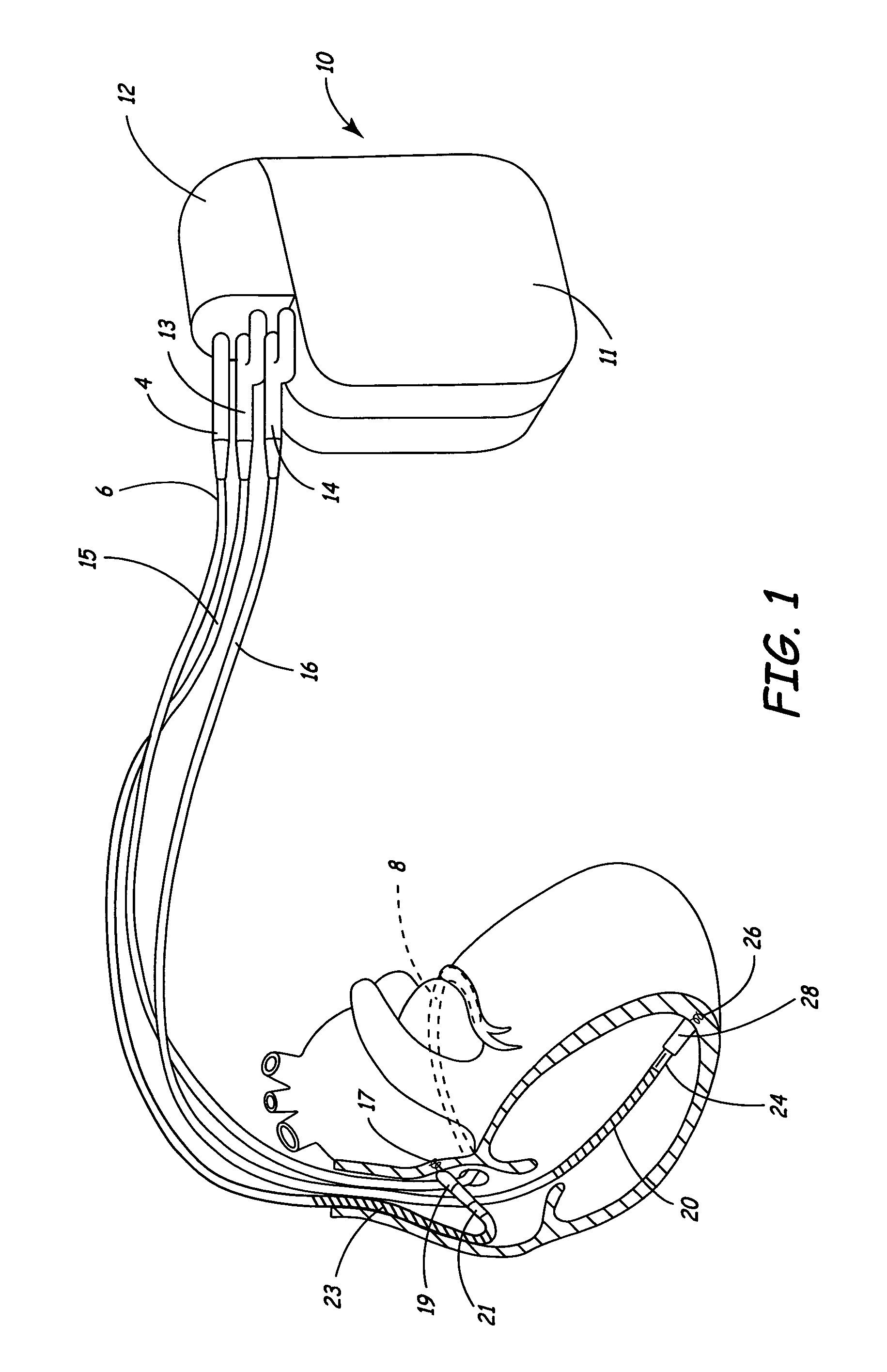Dual chamber method and apparatus for diagnosis and treatment of arrhythmias
a dual chamber and arrhythmia technology, applied in the field of implantable medical devices, can solve the problems of affecting the specificity of vt discrimination, affecting and affecting the patient's treatment, so as to improve the specificity of vt discrimination, enhance the analysis, and improve the specificity of arrhythmia detection
- Summary
- Abstract
- Description
- Claims
- Application Information
AI Technical Summary
Benefits of technology
Problems solved by technology
Method used
Image
Examples
Embodiment Construction
[0029]The present invention combines event interval and electrogram (EGM) morphology analysis in a prioritized rule-based methodology to reduce the likelihood of false positive or false negative arrhythmia detections. In particular, the present invention is directed to reducing the likelihood of false positive or false negative ventricular tachycardia or ventricular fibrillation detections in the presence of supraventricular arrhythmias. However, it is understood that the present invention may be adapted for use in a number of rule-based arrhythmia detection schemes for improving detection specificity and maintaining or improving detection sensitivity.
[0030]Dual chamber ICDs provide an opportunity for sensing both atrial and ventricular events and, through analysis of P and R patterns, allow discrimination of SVT from VT in many cases. The present invention takes advantage of this opportunity and further enhances a pattern and interval based arrhythmia detection methodology with the...
PUM
 Login to View More
Login to View More Abstract
Description
Claims
Application Information
 Login to View More
Login to View More - R&D
- Intellectual Property
- Life Sciences
- Materials
- Tech Scout
- Unparalleled Data Quality
- Higher Quality Content
- 60% Fewer Hallucinations
Browse by: Latest US Patents, China's latest patents, Technical Efficacy Thesaurus, Application Domain, Technology Topic, Popular Technical Reports.
© 2025 PatSnap. All rights reserved.Legal|Privacy policy|Modern Slavery Act Transparency Statement|Sitemap|About US| Contact US: help@patsnap.com



